Beautiful Israeli Spring Flower
One of Israel’s most iconic wildflowers is the cyclamen or rakefet in Hebrew. It fills the landscape from the Golan Heights, the Galilee, Judea and Samaria south all the way to the northern Negev. Its bloom time is January through March and it grows with a distinctive flower in white, violet or red. When I was a child and Israeli music was becoming more popular, there was a lovely song entitled Rakefet . I still remember most of the lyrics.
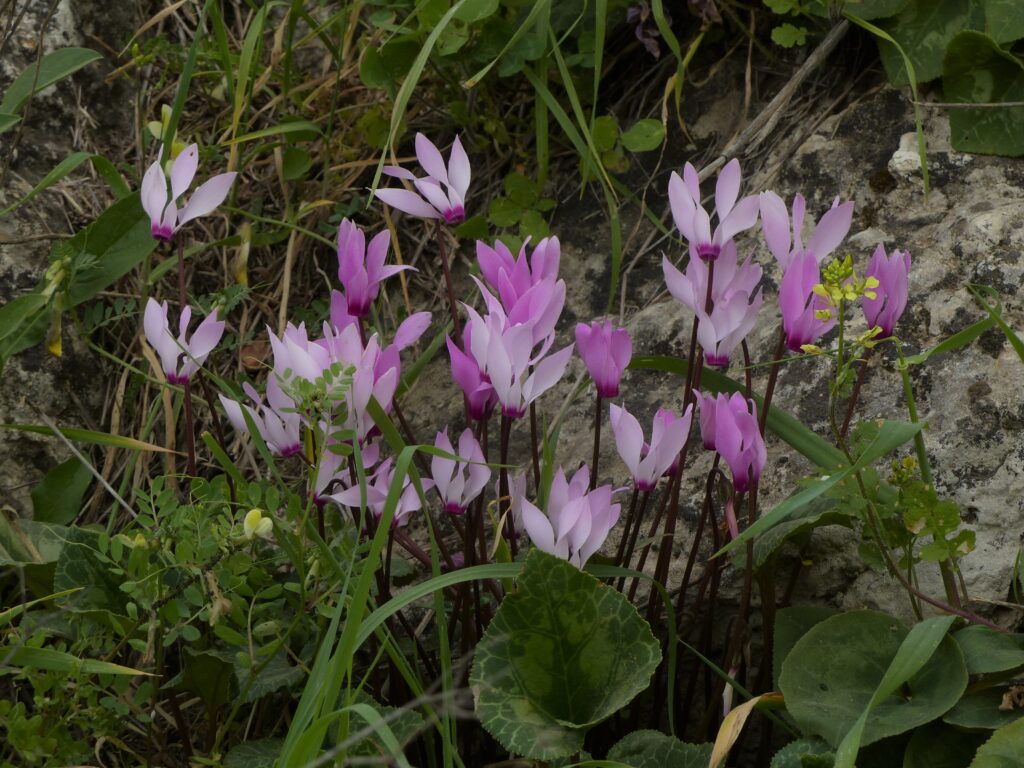
The name cyclamen comes from the Ancient Greek, kyklos meaning circle, referencing the round shape of its tubers. The etymology of rakefet may come from the Aramaic meaning cover, thereby referencing the frequency of plants growing from rocky clefts.
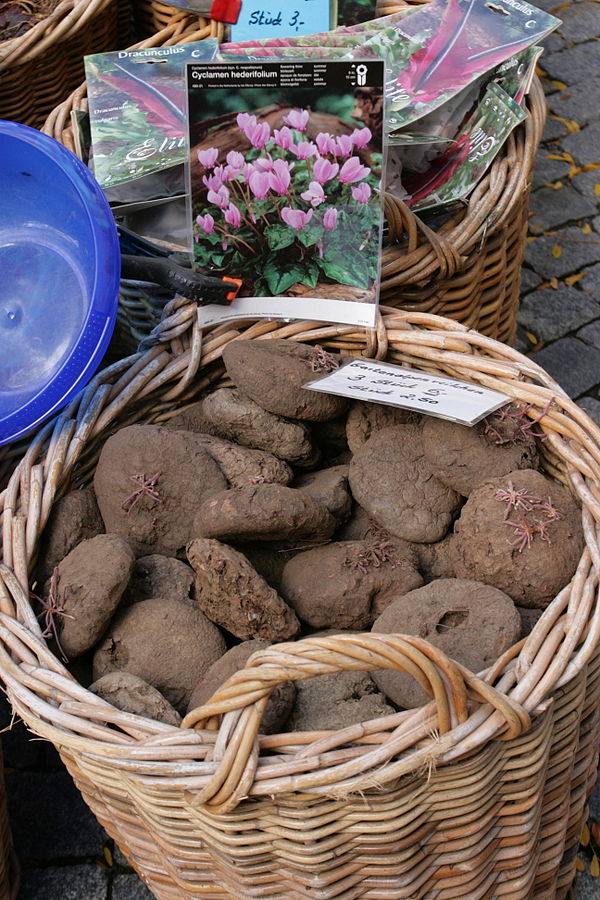
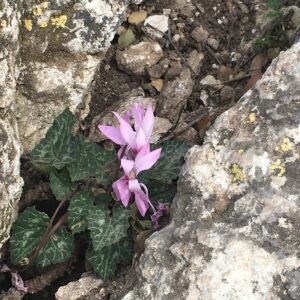
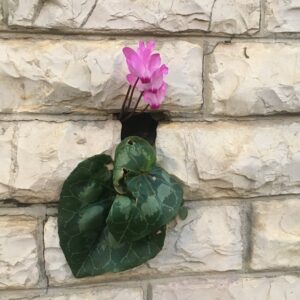
Recognizing Cyclamens
Although there are over twenty species of cyclamen, only two are found in Israel – Cyclamen persicum (sometimes referred to as Cyclamen latifolium) and Cyclamen coum. C. coum has rounded leaves with smooth margins while C. persicum leaves are heart-shaped with a pointed tip and the margins are serrated. Leaves are shades of green with silver markings, some quite striking. Cyclamen latifolium was featured on an Israeli stamp in 1957 as part of a successful project to protect wildflowers from picking by the public.
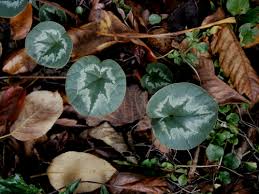
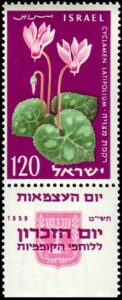
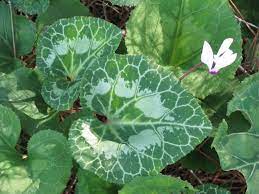
A Familiar Face
Our neighbor had planted cyclamens in her window box. One day, I turned one of the drooping cyclamen flowers upwards and was surprised by the appearance of the flower opening. The stamens are thrust forward and the petals are bent backward. It looked eerily similar to a flower that I recognized from a botany course at the New York Botanical Garden. That plant, however, was a Dodecatheon otherwise known as a shooting star.
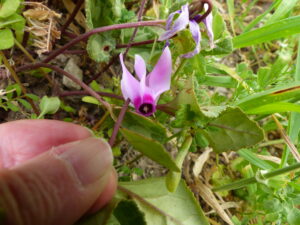
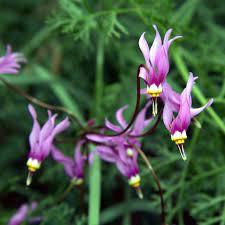
I quickly went to check available botanical information on both plants. I was delighted to see that the similarity was probably due to a familial relationship. They both belonged to the plant family Primulaceae, the primrose family. Despite the relationship cyclamens are native to the eastern Mediterranean while dodecatheons are primarily North American plants.
Ancient Greeks
The two components of the dodecatheon name are the Greek word dodeka meaning twelve and thios meaning god(s). What the name actually signifies is open to discussion. It might reference the twelve Olympian gods. Eleven of them are Zeus, Poseidon, Hera, Demeter, Aphrodite, Athena, Apollo, Ares, Hephaestus, Artemis and Hermes. There is a debate as to whether the twelfth is Hestia or Dionysus. They are referred to as Olympian because they were believed to live on Mt. Olympus.

As my botanical knowledge expands, I find great pleasure in seeing connections between plants. My delight is boundless!
I love cyclamens!
Thanks for the info!
I vote for the 12th to be Dionysus, the Greek patron God of wine in the Olympian pantheon, also commonly associated as the God of festivities, fertility, drunkenness and madness. Altho, I’ve recently read that any quantity of alcohol is harmful.